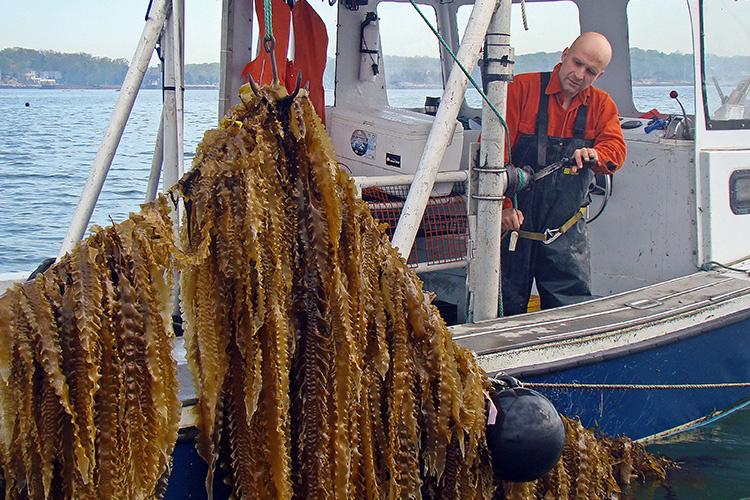Award amount: $1,451,575
Duration: 3 years
Funding agency: NOAA Ocean Acidification Program (OAP), National Oceanographic Partnership Program (NOPP)
Why we care
Growing seaweed in the ocean could be one way to alleviate some of the impacts by climate change and ocean acidification. We need to know how much carbon can be captured by cultivated seaweed and the potential benefits and risks to species and communities such as shellfish and corals that are susceptible to acidification.
What we will do
This project will explore the carbon capture capacity and ocean acidification mitigation in three operational seaweed farms in Florida and Okinawa, Japan. At the two smaller study sites, co-culturing of seaweed with shellfish and corals offers opportunities to assess the additive co-benefits of these combined activities, which could strengthen ecosystem resilience. The study sites in Japan are larger than any seaweed farms in the US, and studies here will help identify the risks and benefits of seaweed farming at scale. Researchers will use a state-of-the-art monitoring program with ocean sensors as well as reference-quality measurements. Drifting ocean sensors will measure water flow across the seaweed farms, which affects the productivity and the amount of carbon absorbed. Numerical modeling will elucidate the capacity of seaweed to absorb carbon under a range of different conditions. By comparing these estimates based on seawater chemistry and physics to the amount of seaweed harvested and exported each year, we can identify carbon capture efficiency to different aspects of the seaweed cultivation.
Benefits of our work
“Learning more about its carbon uptake capacity and ocean acidification mitigation potential is an important endeavor in the context of marine carbon dioxide removal”, says principal investigator Dr. Andreas Andersson of Scripps Institution of Oceanography. “Seaweed cultivation offers many potential benefits to both marine and human communities. It has a rich history in many Asian countries with an extensive knowledge base of best practices and potential environmental impacts.” This project tests how well carbon capture and ocean acidification mitigation can be measured in seaweed farms and if these operations capture carbon and mitigate ocean acidification on different scales. Counteracting ocean acidification is one benefit of seaweed cultivation. This is especially good news for marine ecosystems and species that are sensitive to acidification, like coral reefs and shellfish. Additionally, when seaweed is grown alongside other aquatic activities like fish farming or coral restoration, it can create a positive environment for those activities because the seaweed helps keep the water less acidic and more suitable for marine life. The scale of the larger seaweed farms from Japan in this study exceeds any current farms in the U.S and provides a realistic and rigorous perspective of what is required in terms of space and infrastructure to meet certain carbon capture or local mitigation of ocean acidification goals. Since seaweed farming has a long history in Japan, lessons learned by Japanese seaweed cultivators will be invaluable to U.S. counterparts for adaptation, expansion, and advancement of seaweed cultivation in the U.S. This also can help support the development and implementation of permitting and regulatory frameworks in the U.S.
Investigators
Andreas Andersson, Scripps Institution of Oceanography
Satoshi Mitarai, Okinawa Institute of Science and Technology (OIST)
Loretta Roberson, University of Chicago Marine Biological Laboratory (MBL)
Reggie Spaulding, Sunburst Sensors
Adrienne Sutton, NOAA Pacific Marine Environmental Lab
Read the news release from the University of Chicago Marine Biological Laboratory
Image: Fisherman pulling up sugar kelp. Seaweed cultivation may be one avenue for marine carbon dioxide removal and mitigating ocean acidification. Credit: GreenWave/Ron Gautreau.



